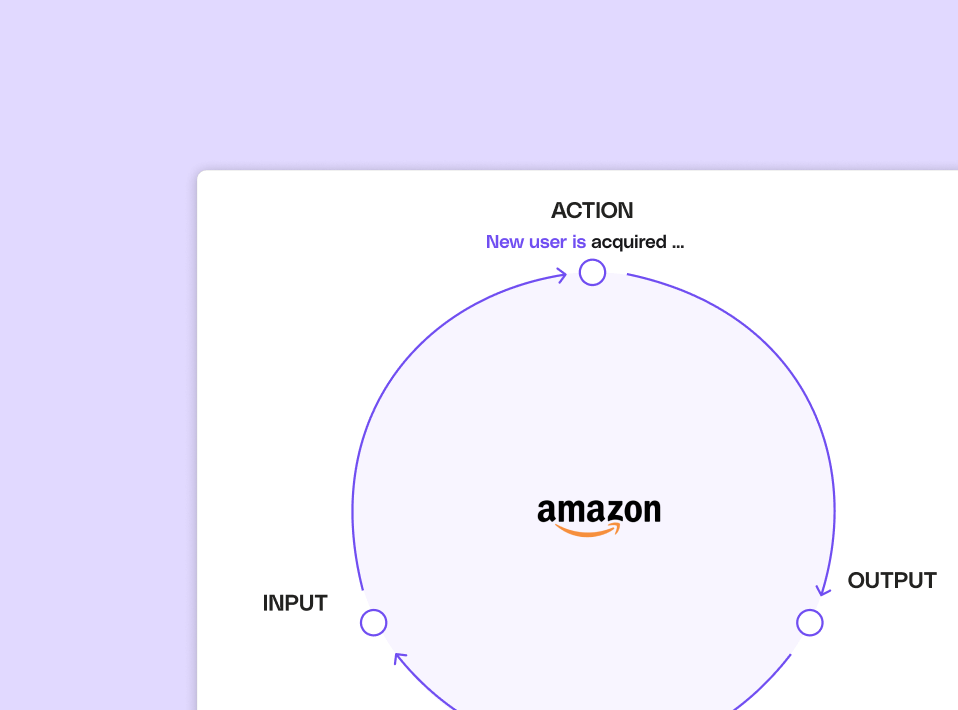A/B testing is a valuable technique used in the field of data-driven decision making and optimization. It allows businesses to make informed choices by comparing two or more variants and determining which one performs better.
By dividing a sample audience into two or more groups and exposing each group to different versions of a webpage, email, or other marketing materials, A/B testing enables companies to gather empirical evidence on which variant yields higher engagement, conversion rates, or any other desired outcome.
| Key Takeaway | Details |
|---|---|
| Optimized Decision-Making | A/B testing optimizes decision-making by comparing variants to identify top performers. |
| Structured Process | It follows a structured process: hypothesis creation, variant testing, data collection, and analysis. |
| Results Analysis | Results analysis is crucial, focusing on statistical significance to inform decisions. |
| Misconceptions | Misconceptions include misinterpreting statistical significance and underestimating sample size importance. |
| Effective Testing | Effective A/B testing involves controlling external variables and avoiding premature conclusions. |
Understanding the basics of A/B testing
A/B testing, also known as split testing, is a method used to evaluate the impact of changes on the performance of a website or marketing campaign. It involves randomizing visitors or customers into different groups, with each group being exposed to a different version of the design element or content being tested. The goal is to identify the variation that produces the most favorable outcomes, allowing businesses to optimize their strategies.
A/B testing has become an essential tool for businesses in today's digital landscape. With the ever-increasing competition and the need to stand out from the crowd, companies are constantly looking for ways to improve their online presence and attract more customers.
A/B testing provides a scientific approach to this process, allowing businesses to make data-driven decisions and maximize their chances of success.
Definition and purpose
🔬 A/B testing, also known as split testing, is a method used to evaluate the impact of changes on the performance of a website or marketing campaign. It involves randomizing visitors or customers into different groups, with each group being exposed to a different version of the design element or content being tested.
The goal is to identify the variation that produces the most favorable outcomes, allowing businesses to optimize their strategies.
Let's take a closer look at how the testing works. Imagine you have an e-commerce website and you want to test two different versions of your product page. In A/B testing, you would randomly divide your website visitors into two groups.
Group A would see the original version of the product page, while Group B would see the modified version. By comparing the performance metrics of the two groups, such as conversion rate or average order value, you can determine which version of the product page is more effective in achieving your desired goals.
The purpose of A/B testing is to provide businesses with valuable insights into their customers' preferences and behaviors. By testing different variations of design elements or content, companies can understand what resonates best with their target audience and make informed decisions based on data rather than assumptions. This allows for continuous improvement and optimization, ultimately leading to better user experiences and higher conversion rates.

The importance of A/B testing in decision making
A/B testing plays a critical role in decision-making by providing data-driven insights. Instead of relying on assumptions or guesswork, businesses can base their choices on evidence and statistical significance.
This allows for iterative improvements and avoids wasting resources on strategies that do not resonate with the target audience. It empowers marketers, product managers, and other decision-makers to make informed choices backed by reliable data and analysis. Some advantages:
- A/B testing is its ability to minimize risks. By testing different variations of a design element or content before fully implementing them, businesses can assess the potential impact and make adjustments accordingly. This reduces the chances of making costly mistakes and allows for a more strategic approach to decision-making.
- A/B testing provides valuable insights into customer behavior and preferences. By analyzing the data collected from different test variations, businesses can better understand what drives their customers' actions. This knowledge can then tailor marketing strategies, improve user experiences, and ultimately increase conversions and revenue.
- A/B testing enables scalability. Whether you are a small startup or a large corporation, it can be applied to various aspects of your business, from website design to email marketing campaigns. The flexibility of A/B testing allows businesses to experiment and optimize different elements of their strategies, ensuring continuous growth and improvement.
| Factor | Description | Advantages |
|---|---|---|
| Data-Driven Insights | A/B testing provides objective, empirical data that supports decision-making, moving away from assumptions and guesswork. | - Reduces reliance on intuition - Enables precise measurement of changes' impact |
| Risk Minimization | By enabling the testing of variations before full implementation, A/B testing helps in assessing potential impacts and making necessary adjustments, significantly reducing the risk of costly errors. | - Allows for incremental changes with minimal disruption - Facilitates evidence-based scaling of successful features |
| Customer Behavior Insights | Offers deep insights into customer preferences and behavior by analyzing how different variations affect their actions. This can inform more effective marketing strategies and product improvements. | - Enhances understanding of customer needs and wants - Supports personalized customer experiences |
| Scalability | Applicable across various business aspects and scalable from small startups to large corporations, allowing for wide-ranging experimentation and optimization. | - Versatile across many platforms and marketing channels - Can be tailored to fit specific business sizes and needs |
| Strategic Optimization | Empowers businesses to optimize strategies based on reliable data and analysis, leading to better user experiences, increased conversions, and business growth. | - Drives continuous improvement and innovation - Supports the validation of new ideas before wide-scale implementation |
| Increased Conversions and Revenue | By improving user experiences and tailoring strategies to meet customer needs more effectively, A/B testing directly contributes to higher conversion rates and increased revenue. | - Directly impacts bottom-line results - Facilitates growth in competitive markets |
| Continuous Improvement | The iterative nature of A/B testing fosters an environment of continuous learning and development, ensuring businesses remain adaptable and competitive. | - Encourages a culture of experimentation and learning - Helps businesses stay ahead of market trends and customer expectations |
| Evidence-Based Decision Making | Facilitates informed choices backed by statistical evidence, allowing for a more strategic approach to decision making that aligns with business goals and customer expectations. | - Strengthens the foundation for major strategic shifts |
The process of A/B testing
Identifying and formulating hypotheses
Before starting an A/B test, it is essential to identify the key elements or variables to be tested and define clear hypotheses.
Hypotheses should be specific, measurable, and aligned with the desired outcomes. By formulating hypotheses, businesses can focus their efforts and ensure that the test generates actionable insights.
Creating variants for testing
Once the hypotheses are in place, it's time to create multiple variants for testing. This process involves changing the design, content, or functionality of the tested element. Ensuring that each variant represents a meaningful difference from the original is crucial, allowing for distinct comparisons.
Implementing the test and gathering data
With the variants prepared, the A/B test can be implemented. This involves directing the sample audience to the different variations using randomized assignment.
During the test, data is collected on user behavior, such as click-through rates, conversions, or any other relevant metrics. It is essential to gather a sufficient sample size to ensure reliable results.
Interpreting the results
Analyzing the data
Once the test is completed, the collected data needs to be analyzed. This involves comparing the performance of the different variants and determining statistical significance.
Statistical analysis techniques, such as t-tests or chi-square tests, can help determine if any differences observed between the variations are statistically significant or simply due to chance.
There are multiple ways to the analyze the data. For example:
Making informed decisions based on results
Based on the analysis of the A/B testing results, businesses can make data-driven decisions. The variant that performs better, based on the desired outcome metric and statistical significance, can be selected for implementation.
The insights gained from this growth tactic can also help guide further optimizations and refinements to maximize results.
Common misconceptions about A/B testing
Misunderstanding statistical significance
One common misconception about A/B testing is misunderstanding statistical significance. Statistical significance indicates whether the differences observed between variants are likely an actual effect rather than a result of random chance.
It is important to consider this factor when interpreting test results, as insignificant differences may not be meaningful for decision-making purposes.
Overlooking the importance of sample size
An often overlooked aspect of A/B testing is the importance of sample size. To obtain reliable and trustworthy results, a sufficiently large sample size is necessary.
A small sample size may lead to inaccurate conclusions or false positives. It is crucial to calculate the required sample size based on statistical power calculations before conducting an A/B test.
Best practices for effective A/B testing
Ensuring test validity
To ensure the validity of A/B testing results, it is essential to conduct tests in a controlled environment. Factors such as seasonality, segment bias, or external influences should be controlled or accounted for to isolate the impact of the variations being tested. This allows for more accurate and reliable conclusions.
Avoiding common pitfalls in A/B testing
There are several common pitfalls that businesses should be aware of when conducting A/B tests. These include prematurely stopping a test, not considering long-term effects, or relying on anecdotal evidence.
By avoiding these pitfalls and adhering to best practices, businesses can maximize the value of their A/B testing efforts and confidently make data-driven decisions.
In conclusion, A/B testing is a powerful tool that allows businesses to make data-driven decisions and optimize their strategies.
By understanding the basics of A/B testing, following a well-defined process, interpreting results accurately, and avoiding common misconceptions and pitfalls, businesses can harness the full potential of A/B testing and drive meaningful improvements in their marketing campaigns and website performance.
Unlock the potential of user-led growth with Cello
Now that you understand the power of A/B testing to drive data-driven decisions and optimize your strategies, it's time to apply that methodology to amplify your growth. With Cello, you can effortlessly turn your users into a potent growth channel. Our peer-to-peer referral program integrates seamlessly with your SaaS product, enabling you to capitalize on user-led growth with minimal development time and immediate payback. Experience the simplicity of frictionless sharing, automated rewards, and real-time performance tracking. Ready to see how Cello can transform your user base into your most valuable asset for viral growth? Book a demo and witness the power of Cello in action.
Resources
Related Articles

Complete Guide to Ad Growth Loops
Discover how ad growth loops can propel your marketing efforts to new heights.

Complete Guide to your B2B Referral Program
Want to get started with B2B referrals? Check out our complete guide to your B2B referral ...

How to use incentives to drive velocity of your growth loops
This article is written together with Wes Bush, founder and CEO of ProductLed and one of the ...

